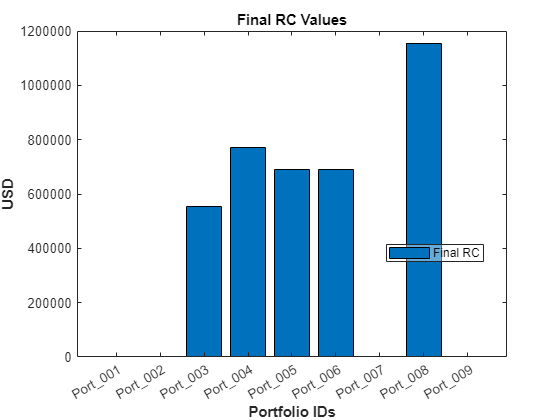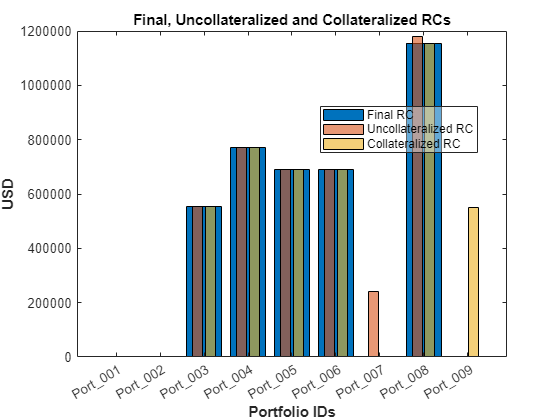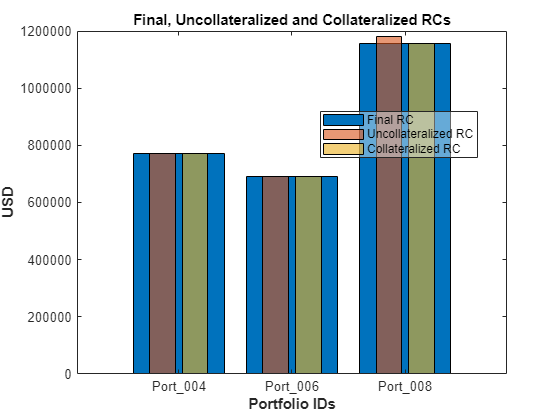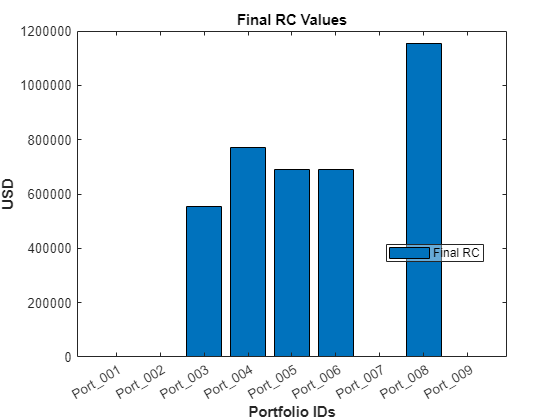rcChart
Syntax
Description
rcChart( creates a bar chart of
portfolio replacement cost (RC) values. The final RC values are selected between the
uncollateralized and collateralized values to minimize exposure-at-default (EAD). For more
information on RC values, see Replacement Cost. saccrObj)
rcChart(
creates a bar chart of portfolio RC values using optional name-value arguments.saccrObj,Name=Value)
Examples
Input Arguments
Name-Value Arguments
Output Arguments
References
[1] Bank for International Settlements. "CRE52 - Standardised Approach to Counterparty Credit Risk." June 2020. Available at https://www.bis.org/basel_framework/chapter/CRE/52.htm.
[2] Bank for International Settlements. "CRE22- Standardised Approach: Credit Risk Migration." November 2020. Available at https://www.bis.org/basel_framework/chapter/CRE/22.htm.
[3] Bank for International Settlements. "Basel Committee on Banking Supervision: The Standardised Approach for Measuring Counterparty Credit Risk Exposures." April 2014. Available at https://www.bis.org/publ/bcbs279.pdf.
Version History
Introduced in R2024b



